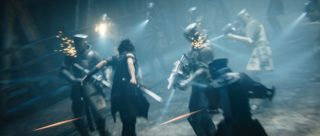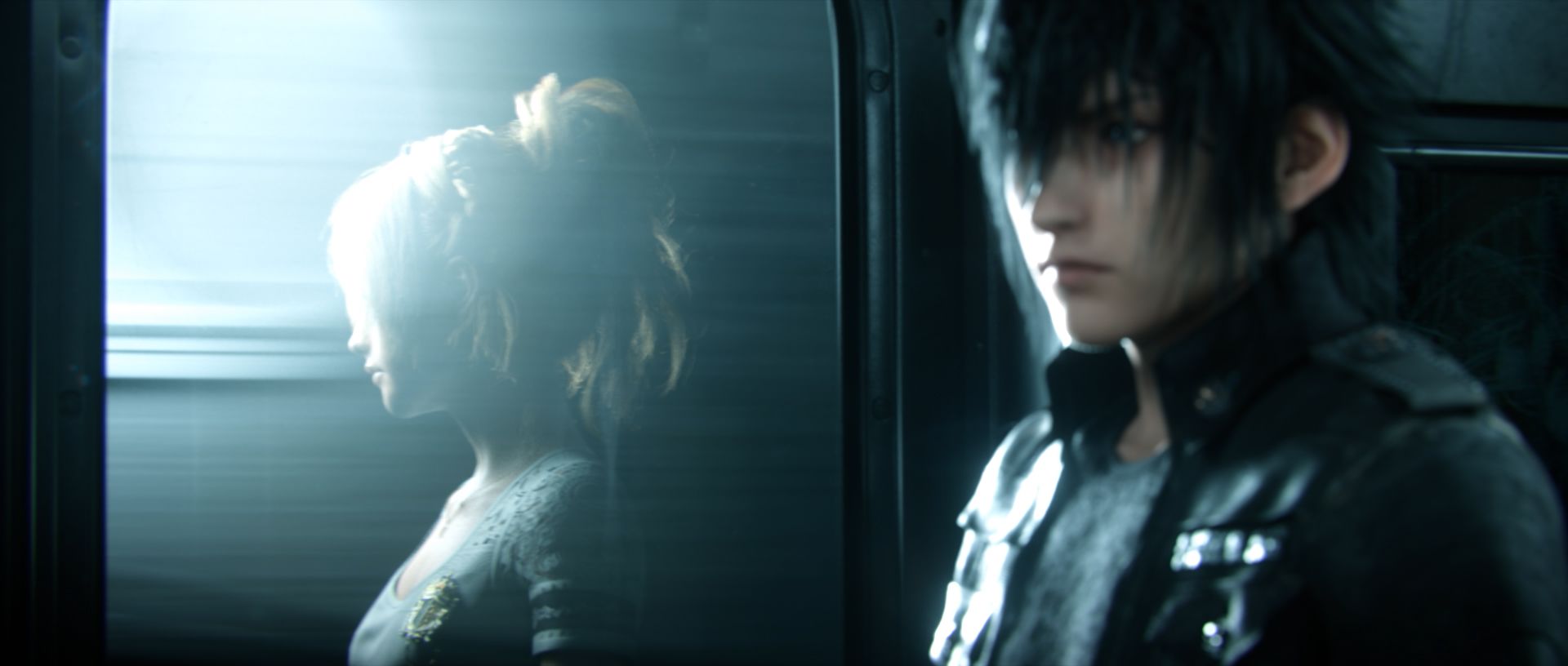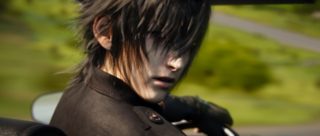It took a decade of development, but the wait was worth it. Final Fantasy XV launched last week and instantly became a huge hit, topping charts around the world. It has already become the fastest-selling game in the series’ history, with publisher Square Enix reporting that the combined day-one retail shipments and digital sales exceeded five million units.
Additionally, the game received wide critical acclaim for its open world gameplay and the stunning graphics that have become a hallmark of the Final Fantasy brand. However, one of its key promotions, the TV commercial, took a decidedly different approach. The live-action spot, set to the song “Stand By Me,” features a group of kids who come together to defeat a giant monster using traps, weapons and magic.
It’s one of the first and only live-action commercials for the game franchise and its director, Kasra Farahani—who has worked on blockbuster movies such as Alice in Wonderland, Star Trek Into Darkness and Men in Black 3 in addition to the upcoming Black Panther movie—recently spoke with [a]listdaily about putting it together. Farahani is a gamer who has many fond memories of Final Fantasy VII, which played a role in the original pitch for the commercial. He proposed adding a magical Final Fantasy element called materia, which longtime fans might recognize. He was joined by Mat Kishimoto, senior product marketing manager at Square Enix America, and Andy Franco, product marketing specialist at Square Enix.
What drew you to the Final Fantasy XV promotion?
[Farahani]: It was very appealing—it wasn’t a tough decision to try and get it. There’s a great, nostalgic quality to the storyline the had about these four kids that were facing insurmountable odds. The idea of whether or not they succeeded, while important, was secondary to their bond. First and foremost was their devotion and the fraternal quality between them. Also, it had a really cool giant monster and visual opportunities in terms of shooting in a foggy forest.
Farahani was also very excited to be a part of the franchise’s 30-year legacy.
What were your thoughts when you first saw the finished trailer?
[Kishimoto]: It’s really been a labor of love. We kicked off with the Omelet team in February, so it has really been a pleasure to see it go through different iterations and pivots to where it is today. It was a real surreal moment—the first time I saw it in all of its final glory—to see something that we’ve been working on for so long come to life.
 How did you come up with the theme?
How did you come up with the theme?
[Farahani]: I can’t take too much credit for that. The basic kernel of the idea came from Omelet, which presumably came out of discussions they had with Square Enix. The core of it was there, and what I did was work with a great, collaborative team to refine it and tailor it to a story about brotherhood and devotion in the world of Final Fantasy.
We didn’t want to do anything generic, which is part of why the villain that they’re fighting is the Iron Giant. There are a lot of cool beasts [in the game], but if Final Fantasy is a pillar of video game history, then I think the Iron Giant is a pillar of Final Fantasy history. It has been in many games and offers something to hardcore fans.
How would you say the trailer captures the look and feel of FFXV?
[Kishimoto]: We took a lot of creative liberties with it. It doesn’t take place on an actual world within Final Fantasy XV, but we wanted to capture the same kind of drama and intensity that the game has, bringing it into the real world.
How does FFXV stand out from previous games and its numerous spin-offs?
[Kishimoto]: I think there are two big key differentiators. One is that it is a full-blown action game rather than a turn-based strategy game. That makes it more accessible to more modern gamers. The second key differentiator is that it’s an open world game. While there is a critical story path, you can do things in any order that you want. For hardcore fans of the franchise who love the rich storytelling, deep characters, classic monsters and other core Final Fantasy elements—those are in Final Fantasy XV. So, there’s something for everybody.
What are the key elements to any Final Fantasy game?
[Franco]: One is that they’re all individual games. Each Final Fantasy game is a standalone title—meaning that you don’t have to have played previous versions in order to jump into the next game in the series.
[Kishimoto]: That is one of the most important things. There are so many games out there that have a linear story that carries on from each sequel, whereas Final Fantasy is unique. The characters and world are completely different, and even the combat systems and villains are different. But I think what strings the series together is the graphical quality. Final Fantasy has always been known for its beautiful vistas and high graphical fidelity that blends together medieval, fantastical, and sci-fi elements into one universe. The world has a mix of mechs, magic and swords all in the same universe. The other thing is that Final Fantasy known for its iconic music, which is orchestral and operatic.
[Franco]: Then there are the stories—really deep, engrossing stories. One of the main things we’ve heard from fans of the game is that one of the things they have a long-lasting connection to are the stories that they feel they become a part of.

Was it challenging to create a promotion for a game franchise that’s known for cutting-edge CGI graphics?
[Farahani]: It’s intimidating. It’s a beautiful game, and our challenge was to tie-in to the aesthetic of the game as much as we could without trying to do a 1-to-1 excerpt from the game. The showcase of our story are these kids, and the heroes come in, but you see them in a mysterious way. You can sort of imagine that our little film is like side mission or vignette that Noctis (the main character) and his friends undertake, which is alluded to at the end of the spot.
[Kishimoto]: On the marketing side, I think it was a huge advantage. Being able to create assets and materials that are of such high fidelity is definitely a plus.
[Franco]: At the same rate, it’s a wonderful opportunity, but it raises the bar that much higher. Our job [with the promotions] is to make the game look and feel as incredible as it really is. With great power comes great responsibility, so with great assets come the great responsibility of pushing them out there and making them look phenomenal.
What are the challenges of promoting a Final Fantasy game, which has such high awareness and popularity?
[Kishimoto]: That’s the fun of all of it. There’s a lot to live up to, especially when you’re coming in at the 15th iteration, and you’ve had fourteen other titles that have been around for the last twenty-nine years or so. The fun is in how you reinvent yourself and how you make yourself relevant in the modern market when there are so many fantastic entertainment IPs out there. [Final Fantasy] is a great brand to work on because you always have to reinvent yourself on every title. You have to explain the story and who the characters are.
[Franco]: The fan base is an incredibly rabid, policing one. They take incredible pride in games that have come before and their connection to them. There’s a lot of pressure—in the quality of the game and in everything that we do—to live up to the standard that fans are expecting.
 How are you reaching new players that might not be familiar with previous games?
How are you reaching new players that might not be familiar with previous games?
[Kishimoto]: There are different ways we do that through our PR channels, retail partners and social media. I think the live-action trailer that we produced was one of the main ways that we wanted to reach out beyond our core fan base. The core reason we went this route was because we could cut together gameplay trailers and cinematic assets from the game, but what would have really helped expand the core fan base was going with live-action.
What do you think it is about FF that has inspired a dedicated fan base around the world?
[Farahani]: It’s difficult to quantify. I think that they (Square Enix) reinvented the franchise a couple of times, but I think they’ve always managed to walk this line between fantasy—things that are grand and larger than everyday life—and finding moments to shade characters in a way that they seem familiar and relatable in a more conventional way. On top of that, I think they’ve done such a good job making spectacular visuals and set pieces over the years. They’re remarkable, and you want the experience just because of how epic they are. You see a trailer for a great film, and you want to experience what that is. I feel that Final Fantasy has done a good job of that.
It’s a good bit of showmanship to make them wait ten years, too.
[Kishimoto]: I don’t think there’s one single thing out there that brings in the masses; there are so many different things. I’ve talked to so many different fans and business partners, and people are drawn in for different reasons. Some people like the epic battles, some like the cinematic cut scenes, others love the individual characters and storylines. Some just love the epic scale with magic and weapons. That’s the magic and fun of Final Fantasy.

